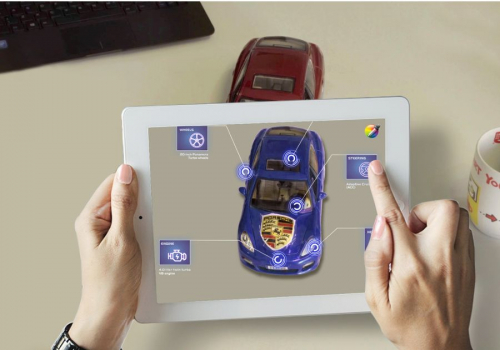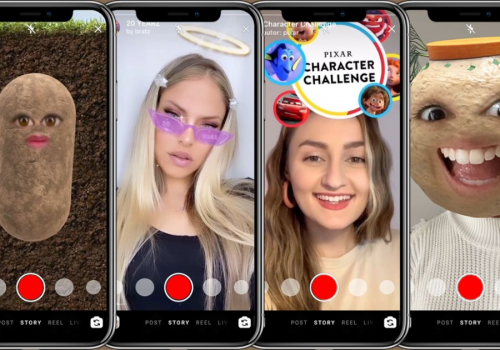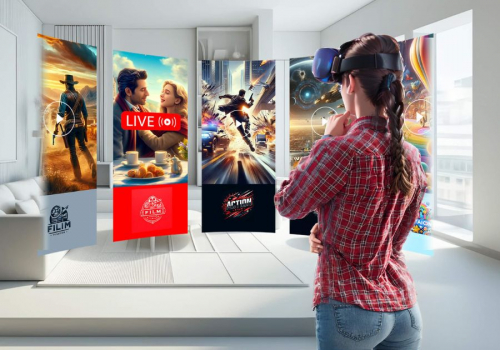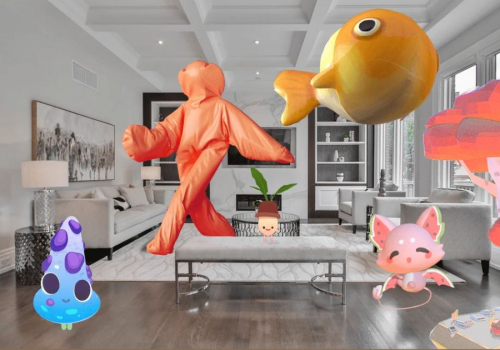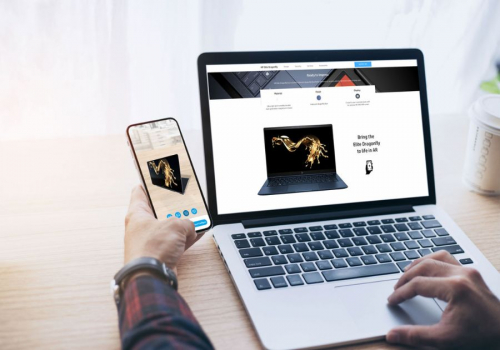Collect information, survey customer needs.
Consult and outline script ideas.
Organize meetings to discuss and agree.
Confirm script and ideas with customers.
The AR ecosystem was created to address some of the biggest challenges businesses face in the digital era: how to capture customer attention, tell brand stories visually, boost engagement, and deliver distinctive experiences—all while optimizing costs and deployment time.
AR enables businesses to showcase 3D product models, add dynamic effects, sound, videos, or instructional information directly within real-world environments, allowing users to observe and interact as if in real life. As a result, every marketing asset, product, or event becomes more vivid and immersive, delivering messages more impressively, helping customers understand products better, and accelerating decision-making.
In a market where customers increasingly demand novelty, convenience, and high interactivity, AR stands out as an advanced technology solution that empowers businesses to differentiate their communications, enhance customer experiences, and sustainably elevate brand value.
3D models, animations, audio, and videos appear directly in the real-world environment with just a single scan. Customers can rotate, zoom in, and virtually place products on-site to better visualize them—allowing for detailed observation and lifelike experiences before purchasing.
AR enables customers to see products in real-world contexts, clearly understanding their size, features, and functions. This transparency reduces hesitation, builds trust, and accelerates purchasing decisions—significantly improving conversion rates.
AR allows businesses to easily update and adjust digital content without the need for new printing or physical displays, dramatically cutting production, logistics, and campaign rollout costs while enabling faster, more flexible deployment.
Leveraging AR technology not only projects a modern and innovative image but also delivers streamlined experiences with a single scan. It creates a unique brand impression in competitive markets and increases memorability among customers.
AR experiences run seamlessly on web browsers and social media platforms, allowing businesses to reach a broader audience via a simple link or QR code—without requiring any app downloads.
Step
1
Receive and process as required
Collect information, survey customer needs.
Consult and outline script ideas.
Organize meetings to discuss and agree.
Confirm script and ideas with customers.
Step
2
Quotation and completion of project documents
After confirming the script and idea, VR360 will quote and send it to the customer for confirmation.
After the quote has been confirmed, both parties will process the paperwork before starting the project implementation.
Step
3
Project implementation - Data collection
After processing the contract documents, VR360 will proceed to notify the project implementation.
VR360 will send the expected timeline and notify the upcoming implementation work based on the agreed time and information.
The team will start with the initial data creation work. Input data can be 360 images taken in reality or 3D spatial designs or 3D models, etc. (depending on the nature of the product/service).
For products that require collecting 360 images and videos of the scene, VR360 and the customer will agree on a suitable construction date. The customer is required to prepare support personnel, prepare a neat and clean space, remove unwanted details... before construction.
For products with 3D designs, there will be many feedback and editing between the two parties to complete and ensure 3D quality before rendering and programming.
Step
4
Project implementation - Product creation
After having enough input data, VR360 will proceed to program to create the product.
The tasks will be listed in detail according to the timeline so that both parties can closely follow the project progress.
During the construction process, if there is any additional work or adjustment, VR360 will discuss with the customer to agree on the plan.
Step
5
Feedback and editing
After completing the product, VR360 will send the first product to the partner and proceed to the feedback and editing stage.
Each project will have 2-5 feedback and editing sessions (depending on the scale of the project) to complete the appropriate product.
Step
6
Handover and acceptance
Edit and complete the final product.
After the product is completed, the two parties will proceed to accept and pay for the project according to the work items that have arisen.
Detailed instructions for using the product - service.
Step
7
After-sales policy
Edit and complete the final product.
After the product is completed, the two parties will proceed to accept and pay for the project according to the work items that have arisen.
Detailed instructions for using the product - service.

